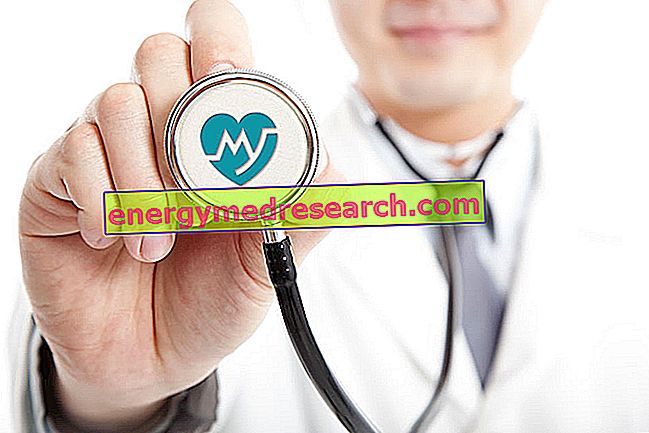Edited by Massimo Armeni
Increasingly, in newspapers and on television, we read and talk about growing overweight among adults and children, and relative obesity.
To complete this picture, the consequent increase in risk factors for athero-coronary diseases is increasing exponentially.
However, we do not talk about how to correctly diagnose and above all what to do if the results are positive for a probable unfavorable cardiovascular event (CVD).
Beyond drug therapy or surgery, the guidelines are completely insufficient and superficial.
Diet therapy and exercise prescription are the only truly incisive weapons available to counter acute and chronic disorders, but in Italy, to date, there is a dreadful scientific and cultural backwardness.
In America the situation is different.
Despite being a country in which there is an evident contradiction - in fact obesity and cardiovascular diseases are rampant in the face of world-leading diagnostic and therapeutic programs - the government invests a great deal, in proportion to ours, in research and experimentation.
The AACVPR (American Association of Cardiovascular and Pulmonary Rehabilitation), the AHA (American Heart Association) and the ACSM (American College of Sports Medicine) are the highest authorities that dictate the global guidelines for the diagnosis and treatment of diseases related to CVD and obesity.
According to these organisms, the initial approach with the patient is a moment of fundamental importance.
The anamnesis must be complete, the stratification of the risk factors linked to a cardiac or metabolic pathology must be carried out exhaustively, all laboratory tests must be consulted, and only then can the evaluation and interpretation of clinical diagnostic tests be passed.
But let's try to bring these theoretical concepts back to the real dimension with a practical example:
PATIENT:
TO)
Sex: woman
Age: 48 years
Race: white
Family history: premature menopause - sudden death of the father at the age of 52 years
Smoking: interrupted for 5 months
Pressure: 141/95
Total cholesterol: 195 mg / day
LDL cholesterol: 125 mg / dl
HDL cholesterol: 33 mg / dl
Fasting blood glucose: 116mg / dl
Triglycerides: 280mg / dl
SGOT: 20u / L
SGPT: 12u / L
Urea Nitrogen: 15mg / dl
Hematocrit (%): 41
Creatinine: 1.0 mg / dl
Total iron: 100ug / dl
Body mass index: 26.0 kg / m2
Waist circumference: 86cm
Sedentary lifestyle: the patient has not been exercising for about 3 years
Disorders: orthopnea and paroxysmal nocturnal dyspnea - ankle edema
Previous diseases: no metabolic or other diseases
B)
Relative or absolute contraindications to the exercise test: none
Diagnostic submaximal test: conduit on moving walkway with Aåstrand-Ryhming single stage adapted protocol
Inotropic / chronotropic incompetences: absent
Segment divergences ST: absent
Arrhythmias: absent
Angina: absent
Hypo / stress hypertension: absent
Ataxia or syncope: absent
Cyanosis or pallor: absent
Cramps, dyspnea, claudication: absent
Pain: absent
Calculated VO2 max: 6.7 MET
At a first glance, the patient appears to be relatively healthy: from blood tests, medical history, recent disorders and the sub-maximal diagnostic test there is no evidence of a possible unfavorable event, but by observing the data more carefully we notice which is not the case.
According to the indications of the aforementioned organisms, in fact, the patient presents with 6 risk factors for the development of an atherocoronary and / or metabolic disease, the complained complaints represent a possible CVD symptom, and her VO2 max is really too much low, which shows a mediocre functional capacity.
The patient is in a class B class with a stratification of: moderate risk.
The treatment involves a lifestyle change within a maximum of 6 months, the prescription of physical activity and diet therapy to reduce risk factors and bring them to at least 2, no drug therapy.
For intense physical exercise-> 70% HRmax or> 60% Vo2 max- the presence of medical personnel (doctors or nurses) is required, which is not necessary for the execution of moderate-intensity exercise - <65% HRmax or < 55% Vo2 max-.
The patient / client will be trained no more than 3 times / week and for no more than 35-40 minutes at a time, constantly monitoring the trend of total body water and lean mass, and adapting the training to the results of the exam of body composition.
The physical exercise will be divided into an initial warm-up, multi-joint exercises with free weights with an intensity between 40-55% of 1RM, fast walking and / or running on a moving belt at an intensity between 45-65% of HRmax with variable slope, cool-down on carpet at 30-40% HRmax.
There are no increases in muscular strength or intensity of running, at least for the first 3-4 weeks; the subsequent increase in muscular resistance will occur with an increase in repetitions and in the series, not of the training load, at least for the first 3 months.
Particular attention in the warm-up and cool-down phase.
"Post-exercise" extensions if the case requires it, and strictly "in chain".
Quarterly follow-up.
For the execution of the submaximal stress test the supervision of medical personnel in America is not required, in Italy it is necessary instead for a maximum test.
Dietary therapy, assisted by the attending physician, will be set with a protocol of 5 meals / day with a ratio of macronutrients as follows: 60% carbohydrates, 20% proteins, 20% lipids.
The caloric intake is estimated on the total daily metabolism, therefore on the percentage of lean mass of the patient; therefore, an analysis of body composition is required, with monthly follow-up.
The above example of diagnosis and treatment should represent practice, not the exception.
Furthermore, the collaboration between Physician and Clinical Exercise is essential to protect people's health.
To date, in Italy, it is unthinkable that this does not happen!
In summary, metabolic diseases and heart diseases are unfortunately on the increase, and the prescription of physical exercise and diet therapy, combined with pharmacological therapy when the case requires it, are absolutely essential for the diagnosis and treatment of these diseases.



